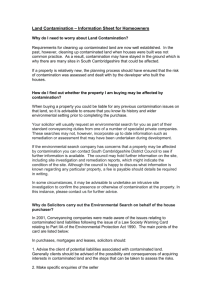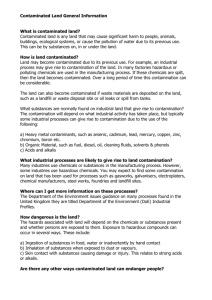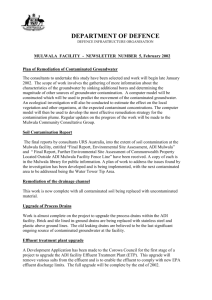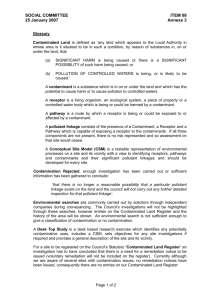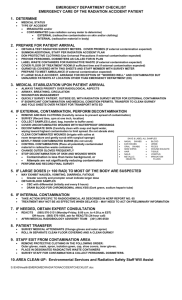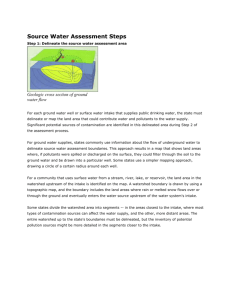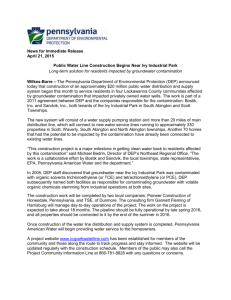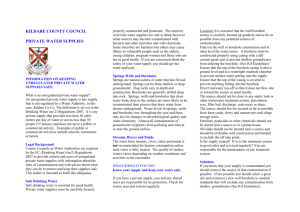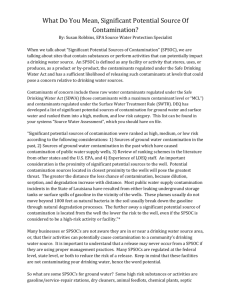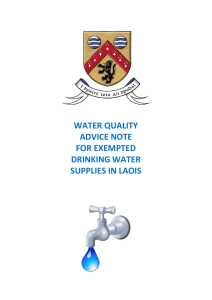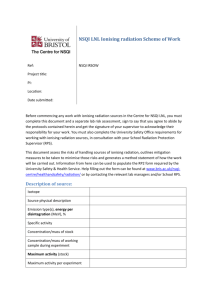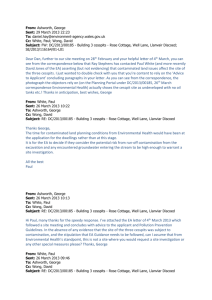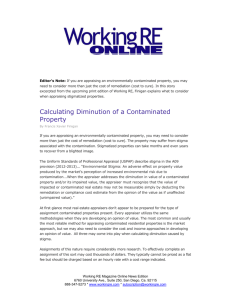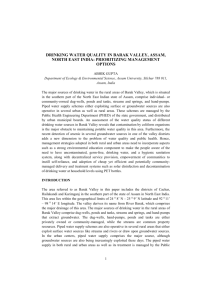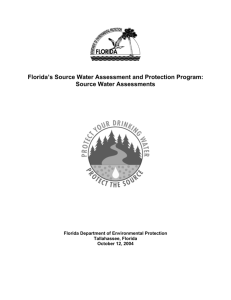polluted contamination
advertisement
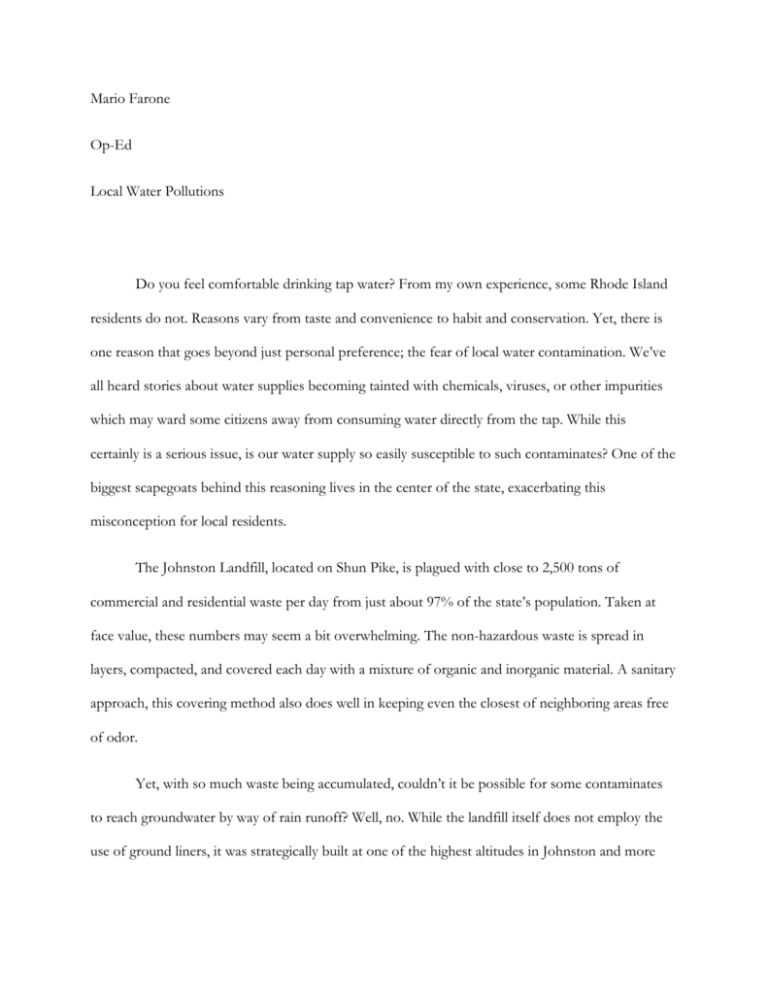
Mario Farone Op-Ed Local Water Pollutions Do you feel comfortable drinking tap water? From my own experience, some Rhode Island residents do not. Reasons vary from taste and convenience to habit and conservation. Yet, there is one reason that goes beyond just personal preference; the fear of local water contamination. We’ve all heard stories about water supplies becoming tainted with chemicals, viruses, or other impurities which may ward some citizens away from consuming water directly from the tap. While this certainly is a serious issue, is our water supply so easily susceptible to such contaminates? One of the biggest scapegoats behind this reasoning lives in the center of the state, exacerbating this misconception for local residents. The Johnston Landfill, located on Shun Pike, is plagued with close to 2,500 tons of commercial and residential waste per day from just about 97% of the state’s population. Taken at face value, these numbers may seem a bit overwhelming. The non-hazardous waste is spread in layers, compacted, and covered each day with a mixture of organic and inorganic material. A sanitary approach, this covering method also does well in keeping even the closest of neighboring areas free of odor. Yet, with so much waste being accumulated, couldn’t it be possible for some contaminates to reach groundwater by way of rain runoff? Well, no. While the landfill itself does not employ the use of ground liners, it was strategically built at one of the highest altitudes in Johnston and more than 15 miles away from the nearest water treatment plants. Because of the high altitude and “waste layering” tactics, it is virtually impossible for any contaminated water to reach ground water supplies. Landfills are necessary for a comfortable living environment and our own state landfill essentially sets the standard in eco-friendly practices making it the least of our concerns when it comes to water contamination. But, as it stands now, even highly regulated areas in the U.S still face major water contamination problems. In the most recent national report on water quality in the United States, 45 % of assessed stream miles, 47% of assessed lake acres, and 32 % of assessed bays and estuarine square miles were classified as polluted. This begs the question, what is the real cause of this contaminated water? If there should be any finger pointing at the possible threat to water purity and environmental health it should be headed back in our direction. Human pollutants are amongst the largest contributors to local water contamination and range from common litter, to noxious liquids such as car oil and windshield wiper fluid. One of the most common forms of water pollution and perhaps the most environmentally disruptive takes the form of storm water. Living in the northeast, it is common for us to see heavy snow and rainfall throughout the seasons. Each time it rains or snows, hundreds of gallons of storm water rushes through our cities and towns and eventually makes its way into the various rivers, lakes, and ponds locally as well as the statewide. But how can pieces of trash find their way into our water system? Common pollutants dropped across town such as plastics, cigarette butts, Styrofoam cups, shopping bags, and many more make their way into our streams and rivers. This happens when the pollutant materials are swept up from impervious surfaces, such as a local roadway, by running rainwater. The pollutant is then carried to the next runoff such as a sewer drain, now having entered the water cycle. Furthermore, chemical pollutants from our vehicles leak and run into these storm deposits as well, further contaminating the storm water. Eventually, this contaminated steam will find its way into various rivers, lakes, ponds, and even our ocean. The contaminated water, once it reaches a resting destination, will also start to affect wildlife in the region. The heavier the pollutants, the more sunlight is inhibited from entering the water, providing less and less nutrition to the base layer of the food chain, underwater plants. If pollution is bad enough, we could even start to see an increase in waterborne pathogens making swimming in these areas impossible. Industry would also be greatly affected, as much of the coast relies heavily on these environments. Individual water supply could also be affected if polluted water that has been absorbed through the ground can make its way to local aquifers and even well water Trash plays a major role in water contamination and just a few plastic cups or spilled oil can prove to be harmful to our water supply. Local water as a whole, although harder to contaminate due to state regulation, is still not entirely safe if we as a community practice irresponsible disposal. Individual water supply contaminations have a higher chance of being affected if water that has been absorbed through the ground can make its way to local aquifers and even well water Even though the risk for community water contamination is pretty minimal, the matter of creating and maintaining a healthy environment is far more important. This problem of pollution begins and ends with us. There is only so much that a state or town can do to minimize litter; that job rests with the individual. That being said, small but immensely helpful changes in the way we look at our environment are what will help the most. Making sure that all trash is deposited in a receptor, cleaning up spilled oil or car fluid while properly disposing of their containers, and limiting the amount of lawn chemicals you use are just a few steps in the right direction. Every person plays a small role, individually, but combined can mean the difference between a healthy or an unhealthy habitat. Urging local officials to construct a more preventative drainage system could vastly help prevent the entrance of pollutants. (Even something as simple as a mesh net instead of an uncovered opening) The ocean state that will live within depends on us to help create a pollutant free environment to help preserve the industry and recreation that is so deeply connected with our history. Whether the change is for the preservation of our ocean habitat, industry, or even our drinking water, it’s a change that we can stand behind together as a community. Works Cited United States Environmental Protection Agency (EPA). Washington, DC. "The National Water Quality Inventory: Report to Congress for the 2002 Reporting Cycle – A Profile." “Health Effects of Drinking Water Contaminants." Health Effects of Drinking Water Contaminants. N.p., n.d. Web. 07 Mar. 2013. "Groundwater Contamination." Groundwater Contamination. N.p., n.d. Web. 07 Mar. 2013.


